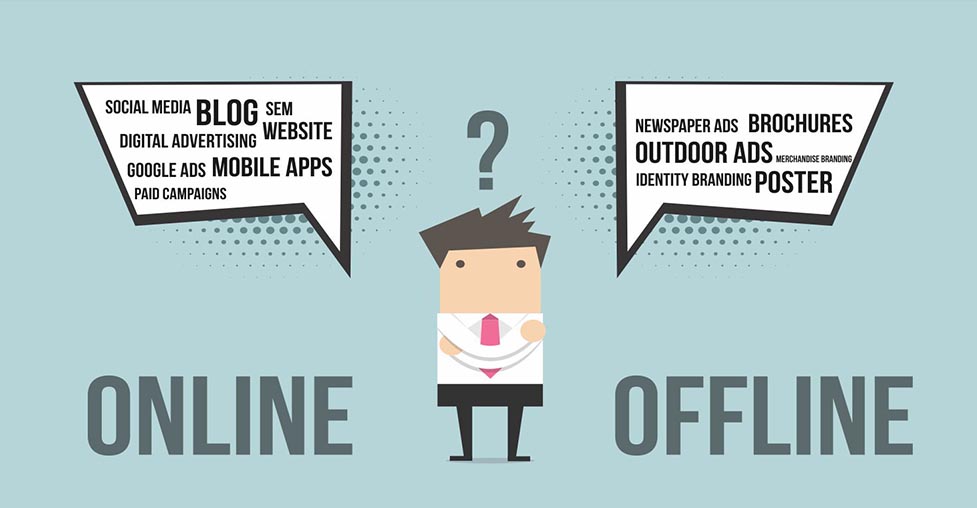By now, most companies have understood the importance of creating a solid online presence. With the internet and social media gaining ever more traction, businesspeople are starting to wonder whether it’s still worth it to invest in offline content as well. After all, everything seems to be happening online these days. Here are a few ideas on how to make the most of both online and offline content by letting them complement each other.
Why invest in both online and offline content?
By sharing valuable content online and offline, you not only get your name out there, you also establish your company as a credible expert. Providing interesting content for free is great for both past and potential clients. Among the first group, these extras will build loyalty, among the second group, it will create interest and trust in your product or service. Both will result in increased inquiries for new or recurring projects.
By focusing on both online and offline media, you can reach a wider audience and get in front of the same people several times. This has been proven to increase the success rate of content marketing strategies by keeping you at the front of people’s minds.
Setting goals and determining your strategy
To make the most of the content you create and use it effectively online and offline, you need to be clear on what you want to achieve and how you will go about it.
Start by evaluating what you are already doing. How many blog posts are you publishing and where are you sharing them? Which magazines do you advertise in? Who do you send your case studies to? And most importantly: which results do these approaches bring you?
If you have a way of tracking results, go through the numbers or at least estimate which types of content lead to how many new sales. This will help you understand where most of your leads come from. That way you can decide where to spend more or less time and how to best allocate your resources for the highest ROI.
You might be surprised that content which takes a lot of time generates fewer inquiries, or it might be the other way around. Either way, the insights you gain from analyzing your content strategy will help you optimize it to get maximized results.
Bringing online and offline content together
Online and offline content differ in many ways, which is something you can use to your advantage.
- Presentation and available space
For example, online you don’t have space constraints. You can make your posts, articles, or ads as long or short as necessary. In newspapers or magazines, you might only get a half-page feature, or you can only afford so much ad space. While this might seem like a drawback of offline media at first, it’s a great chance to whet people’s appetite for more of your content.
By encouraging them to visit you online, you’ve now brought your offline readers to your online presence. That could be your Facebook page, YouTube channel or website where they will find that post, video or article you spoke of in the printed medium.
- Expanded reach
Another difference you can use to your advantage is reach. It’s no secret that online you can get a hold of more people than offline. That can be a good thing as you can easily reuse content which has been published offline on your website or LinkedIn page for example. Chances are, your online followers haven’t seen it yet and will be curious about it. For those who have read it in the latest trade journal already, you can add an extra bit of info, so they feel like they can discover a new aspect of the story which was not part of the printed piece.
- Publishing frequency
In offline media, you generally publish articles or ads less often than online. This could be because you can run more Facebook ads for the price of one print ad or because newspapers usually will not publish stories about the same company too close together. On your own online channels, you can post as often as you like. This might look like a drawback for traditional media at first, but it can easily be leveraged by using the offline piece to draw your audience to your online channel and then keeping them engaged with frequent updates on your website and social media channels.
Curious to find out how you can use the differences between online and offline channels to your advantage? Get in touch with us now or check out our website to learn how we can help you create an effective content marketing strategy.


